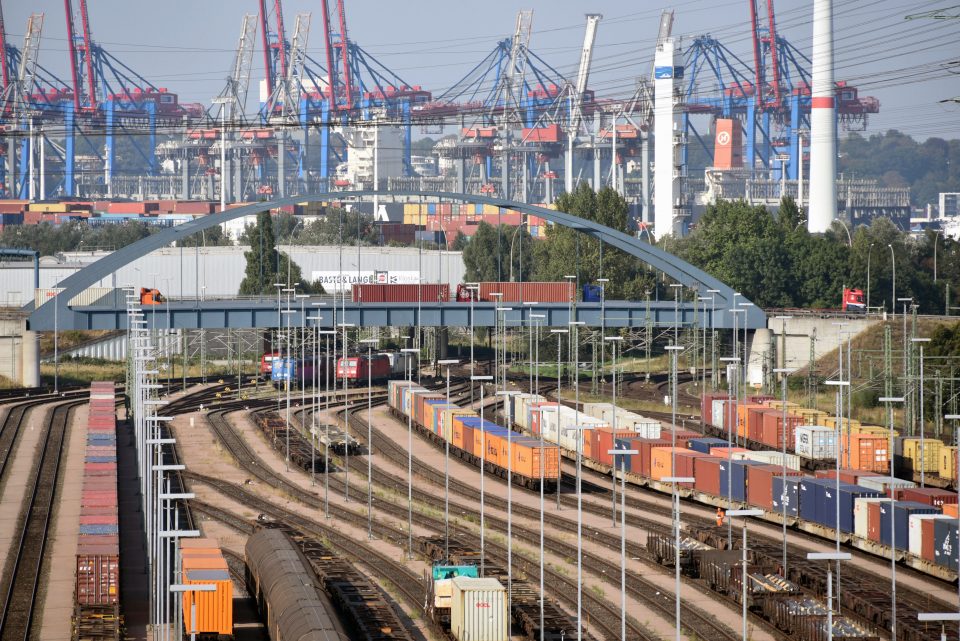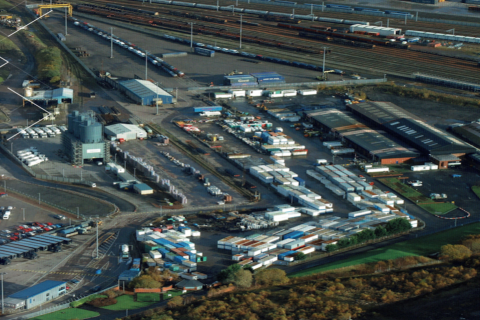Fully automated rail terminals: how far away?

At the moment, full rail terminal automation does not exist in Europe. But this is to change, according to Hamburg Port Consulting (HPC). “In the next 5 to 10 years, we expect to see several inland terminals with automated processes”, said Nils Kemme.
Kemme is Director Simulation at HPC. At the conference Improving Rail Terminal Efficiency, he will discuss the challenges and trends in the field of automation for intermodal terminals. The US is much further in these developments, he notes. “This is because terminals and trains in the US are much bigger than the ones in Europe, thus providing more potential to leverage the benefits of automation.”
Automated container loading
Automation has certainly gained some foothold in the European rail freight industry. The larger terminals are considering, planning and partly using automation technology for processes such as container stacking and container transport. These processes are relatively easy to assign to a computer, Kemme explains. “It gets more complicated when automating train loading and unloading procedures.”
According to the consultant, several manual operations still have to be performed directly on the train, such as check processes, pin settings and repair works, Full automation of rail cranes is very challenging due to work safety requirements for the human-machine interaction. This requires sophisticated sensor technologies for identifying the container positions on the train and workers in between the trains, which is available, but not yet broadly proven and accepted for the intermodal industry, explained Kemme. “Due to this, full automation of inland terminals is not very common yet.”
Automated gate operation
A feature that is becoming increasingly used for rail terminals is automated gate operations through optical character recognition (OCR). This system screens and registers incoming traffic. “This is typically used for incoming trucks, but is sometimes also applied to identify the containers on a train. The system registers the container numbers, the position on the wagon, but also damages, for example.“
“Normally this work is done by a person who walks by the train to inspect and register a waggon set. Automating this procedure saves cost and time, and thus improves the capacity and the competitiveness of a terminal. Moreover, mistakes can be avoided and a terminal can respond immediately in case of incorrect loading of the train”, said Kemme.
Italy, Austria, Germany
In Europe, automation of these processes are tried and tested by the larger rail terminals. For example, Hupac operates OCR at its Italian terminal in Busto Arsizio-Gallarate, while the Austrian intermodal terminal Wiencont is using the latest technologies to connect the three transport modes of rail, road and see. The german hub of Duisport is at the forefront of developing new solutions to automate even the more precise handling procedures. (all three companies are present at the conference)
However, the most advanced terminal is currently located in North America, says Kemme. “This is the CSX Intermodal facility Winter Haven in Florida, which has been designed and developed with the support of HPC. It is the terminal with the highest degree of automation that I am aware of, featuring, in addition to automated stack handling, a high level of crane automation for train handling operations. They are using the technologies, trusting them and not unimportant, they have been approved.”
Investment
Approval of new technologies is another crucial factor, as safety plays a big role in the automation of rail terminals, the consultant explains. “Even in an automated facility, there are still people walking around in close proximity of automated machines. If a person is not detected correctly by a machine, this could have fatal consequences. Therefore sophisticated sensor and indentification technologies have been developed and are now available to solve this problem.”
However, money also plays a role as automation technology usually requires higher upfront investment than conventional equipment. “Inland terminals have less money to spend than large seaport terminals. Moreover, with only limited example available, terminals are looking for personal solutions. Once rail terminal automation is more common, it is likely to be picked up much faster.”
Conference on terminal efficiency
Nils Kemme is one of the speakers at the conference Improving Rail Terminal Efficiency This takes place on the last day of the three-day exhibition fair called the Freight and Terminal Forum. As part of the larger RailTech Europe 2019, this event is held from 26-28 March 2019. Registration for this event is already open.
You just read one of our premium articles free of charge
Want full access? Take advantage of our exclusive offer







The article address the issue of setting of pins, so called location cones. A cone doesn’t secure containers during rail transport. There are few incidents where you have had a blow off.
We can provide a mechanical system that permits maximum flexibility in loading different length containers on the railcar by providing many seating positions. The system will also secure container during transport.
This will eliminate the setting of the pins and lock the containers securely on the wagon.